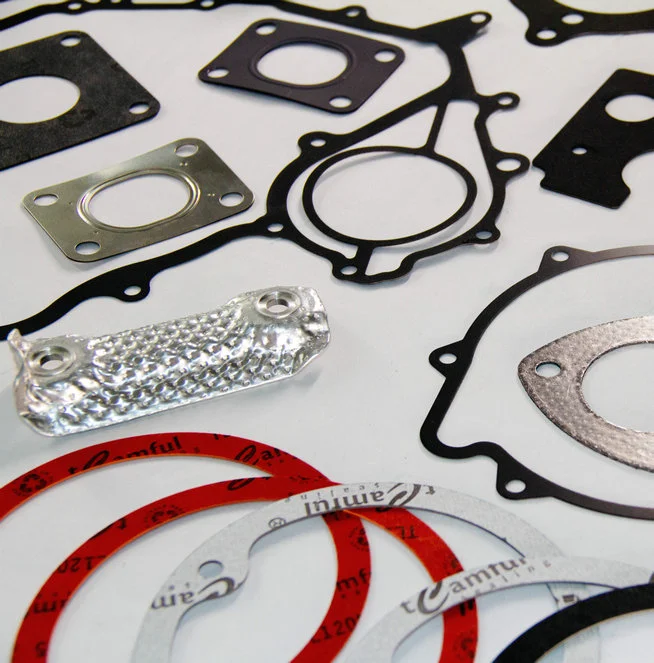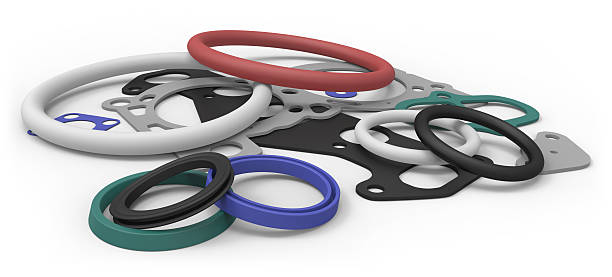When it comes to sealing solutions, the terms "gasket" and "rubber seal" are often thrown around, leaving many people wondering about their differences. These two components play essential roles in various industries, ensuring everything from leak prevention to maintaining high performance in equipment. But what sets them apart? And why choose one over the other? Let's dive in and uncover the details of these crucial components.
Definition and Basic Function of Gaskets
A gasket is essentially a sealing device placed between two or more joining surfaces to prevent leakage. Gaskets come in various shapes and sizes, but they all serve the same fundamental purpose: to create a reliable, leak-proof seal under a specific range of conditions, such as high pressure or temperature changes.
Types of Materials Used in Gaskets
Gaskets are made from several materials to accommodate different applications. Each type of material offers unique characteristics that make it suitable for certain functions.
Metal Gaskets
Metal gaskets, often used in high-pressure environments, are durable and resistant to high temperatures. They’re common in engines and machinery where strength is essential. You can also see rubber-coated metal gaskets on the market.
Non-metallic Gaskets
These include materials like rubber, cork, or felt, designed for applications where high flexibility is required. Non-metallic gaskets are suitable for sealing water pipes or other fluid-based systems.
Composite Gaskets
Composite gaskets combine metallic and non-metallic materials to achieve a balance of durability and flexibility. These are frequently used in environments with fluctuating temperatures and pressures.
Common Applications of Gaskets
Gaskets find their way into a wide variety of applications, from automotive engines to water pipes in household plumbing. They are designed to withstand specific conditions and provide long-lasting seals in everything from chemical plants to everyday appliances.

Definition and Basic Function of Rubber Seals
A rubber seal is typically used to close gaps and prevent leaks. Unlike gaskets, rubber seals are primarily made from different types of rubber, giving them flexibility and adaptability. These seals often protect against environmental factors like dust, dirt, and moisture.
Types of Rubber Used in Seals
Rubber seals can be made from natural rubber or a range of synthetic rubbers, each bringing unique benefits to specific applications.
Natural Rubber
Known for its elasticity and resistance to wear, natural rubber is an excellent choice for flexible sealing solutions in low-temperature environments.
Synthetic Rubbers (Nitrile, Silicone, etc.)
Synthetic rubbers like nitrile, silicone, and EPDM are widely used due to their enhanced resistance to high temperatures, chemicals, and weather conditions.
Common Applications of Rubber Seals
Rubber seals are often used in automotive, plumbing, and electrical applications, where they serve as barriers against fluid or air leaks, dust, and environmental elements.

Differences in Materials and Composition
While gaskets are made from a broader range of materials, rubber seals are usually crafted from different types of rubber. This variance in material composition allows each to specialize in certain functions.
Variations in Functionality and Purpose
Gaskets are primarily used to prevent leaks between fixed components under compression. Rubber seals, on the other hand, are often used in moving parts or to create an environmental barrier.
Differences in Durability and Flexibility
Generally, gaskets offer more durability, particularly in high-pressure situations, while rubber seals excel in flexibility, allowing them to fit into small gaps and moving components more easily.
Environmental Resistance Differences
Rubber seals tend to be more resistant to weather conditions, making them ideal for outdoor applications, while gaskets can handle more intense pressures and temperatures depending on the material.
Cost Differences
Due to the range of materials and applications, gaskets are often more expensive, especially in specialized industrial uses. Rubber seals are typically more affordable, especially for standard, household applications.
Factors to Consider in Selection
Temperature Requirements
Consider the heat levels your application will face; gaskets may be more suitable for high temperatures, while rubber seals perform better in milder climates.
Pressure Resistance Needs
Gaskets are typically more robust under pressure, while rubber seals offer flexibility but may not withstand extreme pressures as effectively.
Environmental Factors (Weather, Chemicals)
For applications exposed to the outdoors or chemical exposure, rubber seals with specific synthetic materials may be more appropriate.
Industry-Specific Preferences
Automotive Industry
In automobiles, both gaskets and rubber seals play vital roles—gaskets often used in engine components and seals in door frames and windows.
Plumbing and Household Applications
Rubber seals are a common choice in plumbing, where flexibility and environmental resistance are key, while gaskets provide strong, leak-proof seals in water systems.
Industrial and Manufacturing Applications
Heavy machinery and manufacturing often require high-pressure gaskets, while rubber seals protect against dust and moisture in electrical and moving components.
Regular Inspection Tips
Routine checks are essential to spot early signs of wear. Look for cracks, leaks, and other indicators of deterioration, especially in high-temperature applications.
Signs of Wear and When to Replace
Any visible damage, brittleness, or loss of elasticity may indicate it’s time to replace either a gasket or a rubber seal. Replacing them before failure prevents potential leaks and damage.
Understanding the differences between gaskets and rubber seals can make a world of difference in selecting the right component for your application. Both serve important functions in various industries but are built to address different needs. Whether you’re looking for flexibility, durability, or environmental resistance, knowing when to choose a gasket over a rubber seal (or vice versa) will help you make an informed decision and maintain the longevity of your equipment.